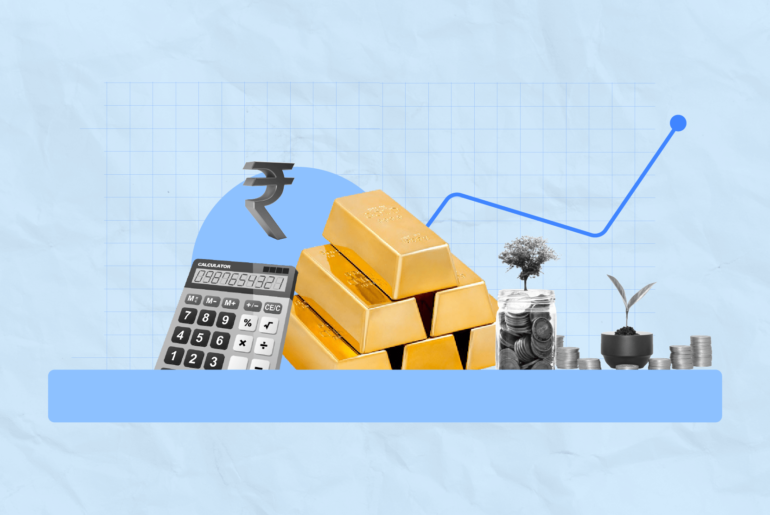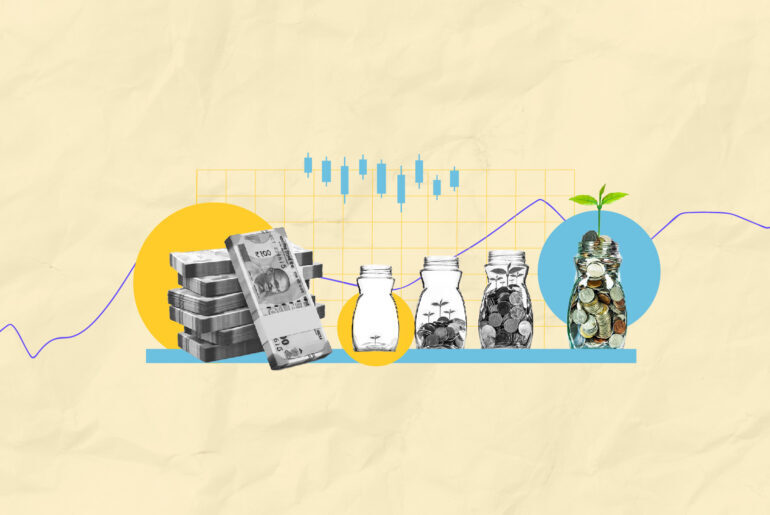Last Updated on May 24, 2022 by Aradhana Gotur
The volume-weighted average price (VWAP) is a trading benchmark used by traders that gives the average price that a security has traded at throughout the day, based on both volume and price. It is a versatile measure that is extensively used by technical traders to find equities trading at suitable price levels for investment. It is important because it provides traders with insight into both the trend and value of security.
Retail traders use VWAP to find the future potential of a stock, and intraday traders use it to decide the mean price in the market so that they can buy a stock when the price is below VWAP. The VWAP is also used by mutual funds and portfolio managers when they have to buy a substantial number of a particular stock. In this article, we dive deep into the VWAP meaning and its calculation.
Table of Contents
What is VWAP?
VWAP is a weighted-average formula that is extensively used by analysts and traders alike to determine the demand for a stock, both in terms of volume and price. For calculation purposes, it takes into consideration all the orders from the day and calculates the mean value. It can be spread over a single time frame or multiple frames.
VWAP has more than one usage, however, it is commonly used by analysts and portfolio managers. This is to eliminate the noise caused by price fluctuations throughout the day and determine a fair price to buy or sell stocks. It offers traders an idea of how the stock is traded through the day. A necessary aspect of a VWAP indicator is the VWAP line or VWAP cross, which takes place when the stock price crosses the value-weighted average price.
VWAP = Cumulative (Price * Volume) ÷ (Cumulative Volume)
VWAP takes into consideration both the price and volume of a stock. While the significance of price is easily understood, the inclusion of volume might confuse many. Well, the volume suggests if it is an appropriate stock to buy or not. A stock that enjoys good demand and price is an excellent bet. If, for some stocks, the price is attractive, however, there is no volume of trading, it means the stock has no takers.
This weighted-average allows traders to evaluate both the price and demand of an asset. Note that VWAP is actually a daily-trading indicator. It doesn’t appear in weekly or monthly trend charts.
Volume-weighted average price is to omit the noise caused by price fluctuations throughout the day and decide a fair price to buy or sell stocks. Click To TweetInterpretation of VWAP indicator
VWAP offers critical indications to traders regarding the price movement of a stock. It helps them identify the exact point in a time frame where the momentum lies. Let’s consider it with an example where a trader may be dealing with a stock that has failed to breakout above the VWAP line numerous times due to constant selling pressure. Now, he may want to know the exact point where the stock successfully breaks above the VWAP indicator line, or else he may end up being on the wrong side of market momentum if he enters a short position.
Stocks lying below the VWAP line are considered ‘cheap’ or ‘value stocks’ and suggest to traders to enter a short position. Conversely, stock prices above the VWAP line are tagged ‘expensive’.
Moving VWAP is a moving average line that visually represents stock price movement against price. It tracks end-of-day VWAP over time, and its time frame can be adjusted to include as many VWAPs as needed.
How to calculate VWAP?
To calculate the VWAP yourself, follow these steps. Here, a 5-minute chart is taken into consideration. The calculation is the same regardless of what intraday time frame is used.
- Find the average price the stock is traded at over the first five-minute period of the day. To do this, add the high, low, and close, then divide by three. Multiply this by the volume for that period. This gives us the PV value.
- Divide PV by the volume for that period. This will give the VWAP value. VWAP value does not hold value when looked at in isolation, it needs to be calculated in a series as mentioned below.
- To maintain the VWAP value throughout the day, continue to add the PV value from each period to the prior values. Divide this total by the total volume up to that point. To make this easier, in a spreadsheet, create columns for cumulative PV and cumulative volume. Both these cumulative values are divided by each other to produce VWAP
VWAP: ∑Price * Volume/ ∑Volume
The difference between VWAP and Moving VWAP
VWAP is an intraday-day indicator that usually lasts for minutes or hours, and is used by short-term traders. On the other hand, moving VWAP is a better option for long-term traders since it gives indications for an extended period.
Both VWAP and moving VWAP are fascinating tools. To get an idea on price reversal in real-time, traders use VWAP indicators, which they can adjust for a shorter time frame as well.
Conversely, traders who follow other moving trend lines like moving average or moving average proxies, find moving VWAP a viable tool for their strategy. The moving VWAP is also used by traders who follow a price reversal strategy. And, for that, they follow a crossover strategy which suggests using a fast average to determine trend direction when it crosses over a slow average. During price reversal trade, moving VWAP is often used with envelope channels for a better understanding of price movement.
VWAP is a great tool that has multiple usages in technical trading. Traders use it with other moving average tools to find the right entry and exit points in the market. It allows you to understand market interest, price trend, demand, and a possible point of trade. Traders also use other indicators that are similar to VWAP to form a fair understanding of the market trends and base their strategies on the same.





